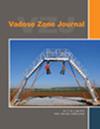美国西部“土壤中水分运动”的多州研究项目:回顾
IF 2.5
3区 地球科学
Q3 ENVIRONMENTAL SCIENCES
引用次数: 0
摘要
为了优先考虑美国的农业研究并提高其全球竞争力,根据1946年的研究和营销法案,设立了多州研究基金(mrf)。为了实施该法案,美国西部的农业实验站(AES)主任定期召开会议,评估、资助和审查多州研究项目(MRPs), AES科学家的成员由技术委员会任命。本文重点介绍了在美国西部发起的土壤和气膜带科学界研究合作的历史。1958年,西部赠地大学的10名科学家和美国农业部(USDA)就“土壤中的水分运动”展开了科学互动,通过连续5年的项目,成员和范围都在不断扩大。我们强调这种合作的价值以及土壤科学和渗透带水文学的科学进步。本文章由计算机程序翻译,如有差异,请以英文原文为准。
Western U.S. multistate research project on “water movement in soils”: A retrospective
To prioritize agricultural research in the United States and to improve its competitiveness globally, Multistate Research Funds (MRFs) were set aside under the Research and Marketing Act of 1946. To implement the act, Agricultural Experiment Station (AES) Directors in the western United States met regularly to evaluate, fund, and review multistate research projects (MRPs), with membership of AES scientists named by the Technical Committee. This article highlights the history of research collaboration in the soil and vadose zone scientific community that was initiated in the western United States. The scientific interactions that started in 1958 with 10 scientists in western land‐grant universities and the USDA to address “Water Movement in Soil” have grown in membership and scope through successive 5‐yr projects. We highlight the value of such collaboration and the scientific advances in soil science and vadose zone hydrology.
求助全文
通过发布文献求助,成功后即可免费获取论文全文。
去求助
来源期刊

Vadose Zone Journal
环境科学-环境科学
CiteScore
5.60
自引率
7.10%
发文量
61
审稿时长
3.8 months
期刊介绍:
Vadose Zone Journal is a unique publication outlet for interdisciplinary research and assessment of the vadose zone, the portion of the Critical Zone that comprises the Earth’s critical living surface down to groundwater. It is a peer-reviewed, international journal publishing reviews, original research, and special sections across a wide range of disciplines. Vadose Zone Journal reports fundamental and applied research from disciplinary and multidisciplinary investigations, including assessment and policy analyses, of the mostly unsaturated zone between the soil surface and the groundwater table. The goal is to disseminate information to facilitate science-based decision-making and sustainable management of the vadose zone. Examples of topic areas suitable for VZJ are variably saturated fluid flow, heat and solute transport in granular and fractured media, flow processes in the capillary fringe at or near the water table, water table management, regional and global climate change impacts on the vadose zone, carbon sequestration, design and performance of waste disposal facilities, long-term stewardship of contaminated sites in the vadose zone, biogeochemical transformation processes, microbial processes in shallow and deep formations, bioremediation, and the fate and transport of radionuclides, inorganic and organic chemicals, colloids, viruses, and microorganisms. Articles in VZJ also address yet-to-be-resolved issues, such as how to quantify heterogeneity of subsurface processes and properties, and how to couple physical, chemical, and biological processes across a range of spatial scales from the molecular to the global.
 求助内容:
求助内容: 应助结果提醒方式:
应助结果提醒方式:


